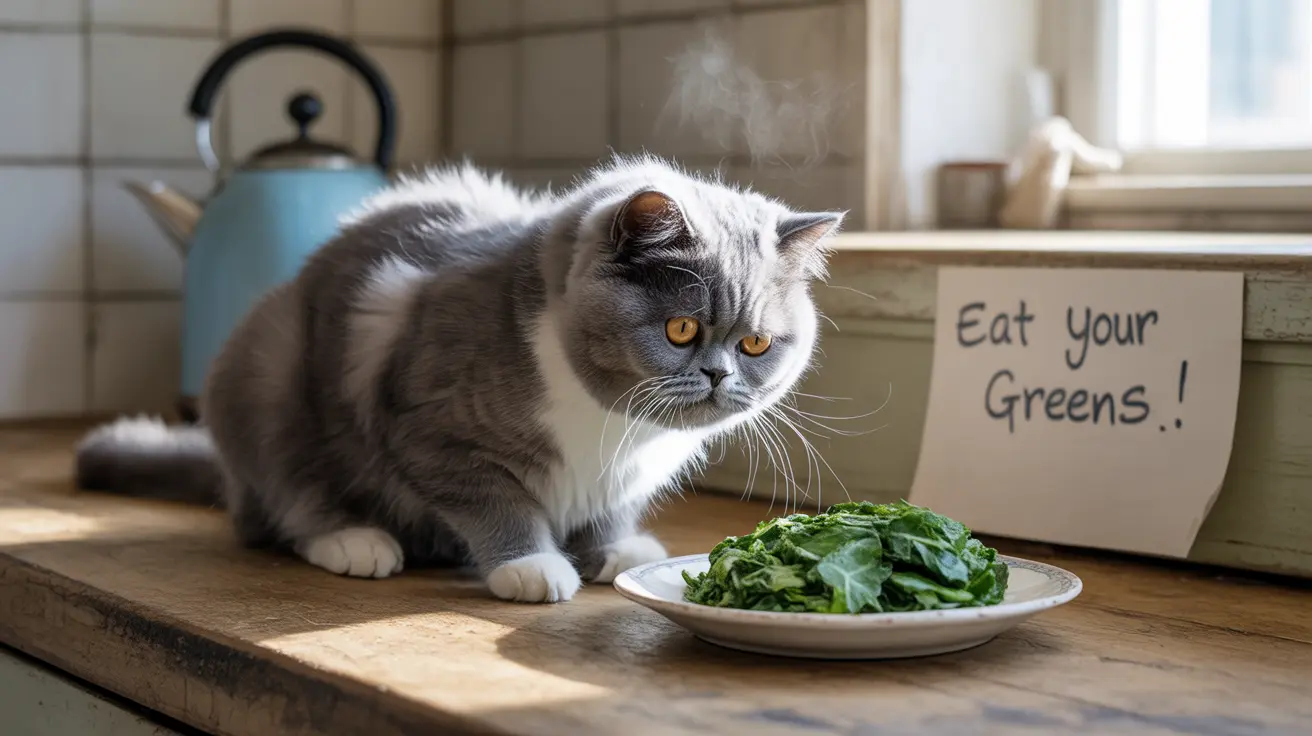Safety and Nutritional Value of Collard Greens
Collard greens are non-toxic to cats when served plain and in moderation. These leafy greens contain valuable nutrients including vitamins A, C, and K, as well as minerals like calcium and iron. However, it's important to remember that cats don't require vegetables in their diet, as they obtain necessary nutrients from meat-based sources.
While these greens can provide some dietary fiber that may aid digestion, they should never replace your cat's regular meat-based diet. Think of collard greens as an occasional supplement rather than a dietary staple.
Proper Preparation Methods
If you decide to offer collard greens to your cat, proper preparation is crucial for safety:
- Wash thoroughly to remove pesticides and dirt
- Steam or lightly boil without seasonings
- Chop into small, manageable pieces
- Remove tough stems to prevent choking
- Serve plain without oils, butter, or seasonings
Never feed your cat collard greens that have been prepared with garlic, onions, or excessive salt, as these ingredients are toxic to cats.
Potential Risks and Concerns
While collard greens are generally safe, there are several important considerations:
Digestive Issues
Cats have sensitive digestive systems, and introducing any new food can cause stomach upset. Start with tiny amounts and monitor your cat for signs of vomiting, diarrhea, or decreased appetite.
Heinz Body Anemia Risk
There's a theoretical risk of Heinz body anemia from compounds in collard greens if consumed in large quantities. This is rarely an issue with occasional, small servings but worth noting for awareness.
Portion Control
The appropriate serving size is minimal - no more than a teaspoon of cooked, plain greens as an occasional treat. Overfeeding can lead to digestive problems and potentially interfere with the absorption of other nutrients.
When to Avoid Collard Greens
Some cats should not be given collard greens, including:
- Cats with existing digestive issues
- Those with known food sensitivities
- Cats on special veterinary diets
- Cats who show no interest in vegetables
Frequently Asked Questions
Can cats safely eat collard greens, and in what amounts?
Yes, cats can safely eat collard greens in very small amounts (about a teaspoon) when properly prepared. They should be served plain and only as an occasional treat.
How should I prepare collard greens before feeding them to my cat?
Wash the greens thoroughly, steam or lightly boil them without seasonings, remove tough stems, and chop into small pieces. Never add oils, butter, or seasonings.
What are the potential health benefits of feeding collard greens to cats?
Collard greens provide some dietary fiber, vitamins, and minerals that may support digestion and overall health. However, these benefits are minimal since cats are obligate carnivores.
Are there any risks or side effects if my cat eats too many collard greens?
Yes, overconsumption can lead to digestive upset, potential nutrient absorption issues, and in rare cases, contribute to Heinz body anemia. Always feed in moderation.
Which seasonings or additives should I avoid when giving collard greens to cats?
Avoid all seasonings, especially garlic, onions, salt, butter, and oils, as these can be harmful or toxic to cats. Serve collard greens plain and cooked.
Conclusion
While cats can safely eat collard greens in moderation, they're not a necessary part of their diet. If you choose to offer them as an occasional treat, ensure proper preparation and start with small amounts. Always prioritize a balanced, meat-based diet for your cat's optimal health, and consult with your veterinarian before making any significant changes to their feeding routine.






